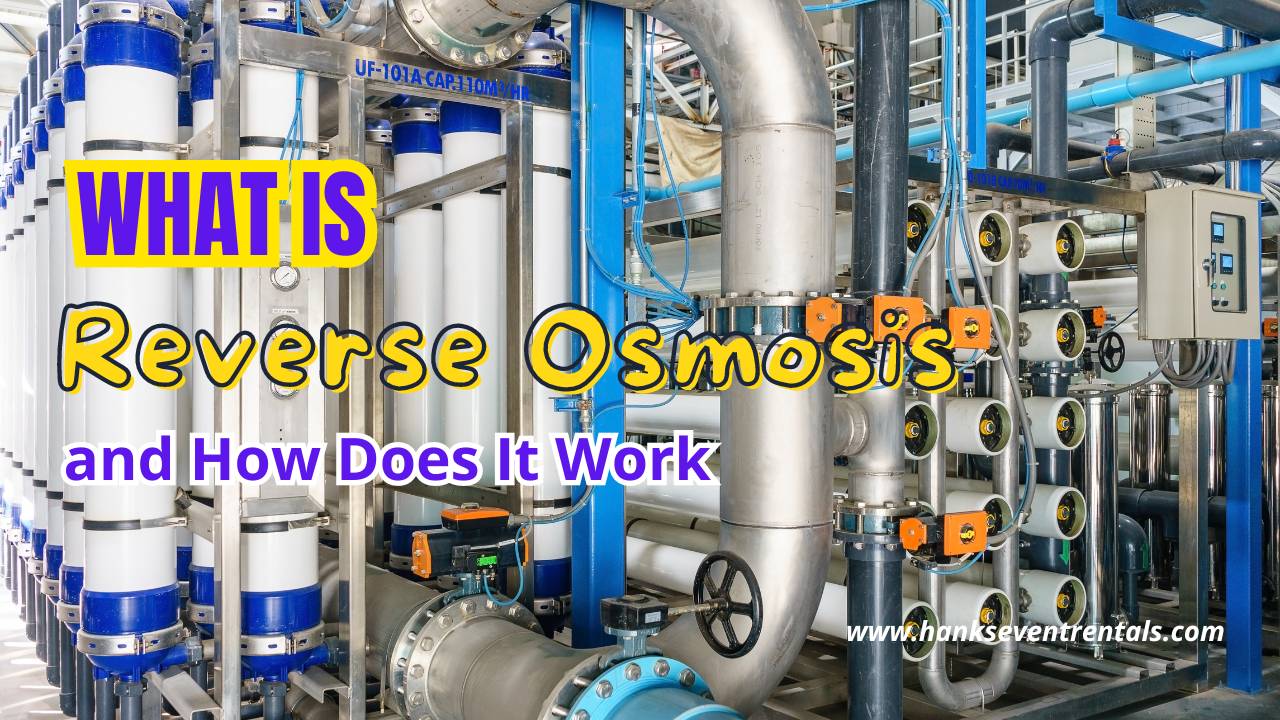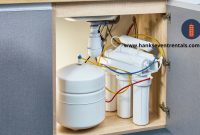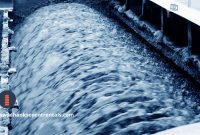Reverse Osmosis (RO) is a widely used water purification technology that has become essential for both residential and industrial applications. Whether you’re looking to purify drinking water at home or require high-quality water for industrial processes, RO plays a vital role. But what exactly is Reverse Osmosis, and how does it work? This article will guide you through everything you need to know about this remarkable technology.
1. What is Reverse Osmosis?
Reverse Osmosis is a water filtration process that removes contaminants from water by using pressure to force water molecules through a semipermeable membrane. This membrane allows only water molecules to pass through, effectively separating them from impurities, such as salts, bacteria, and other dissolved solids.
1.1 The Basics of Osmosis
Before diving into Reverse Osmosis, it’s essential to understand the principle of osmosis. Osmosis is a natural process where water moves from an area of low solute concentration to an area of high solute concentration through a semipermeable membrane. This process continues until there is an equilibrium.
1.2 Reverse Osmosis: The Opposite of Osmosis
Reverse Osmosis, as the name suggests, is the opposite of osmosis. In RO, pressure is applied to the side with a high concentration of solutes, forcing water through the membrane to the side with low solute concentration. This process effectively separates pure water from contaminants.
2. How Does Reverse Osmosis Work?
The process of Reverse Osmosis involves several stages, each playing a crucial role in purifying water. Here’s a step-by-step breakdown:
2.1 Pre-Filtration
Before water reaches the RO membrane, it passes through pre-filters. These filters remove larger particles like sediment, chlorine, and other impurities that could damage the RO membrane or reduce its efficiency.
2.2 The RO Membrane
The heart of the RO system is the semipermeable membrane. This membrane has tiny pores that allow only water molecules to pass through while blocking contaminants. When pressure is applied, water molecules are forced through the membrane, leaving impurities behind.
2.3 Post-Filtration
After passing through the RO membrane, the water undergoes post-filtration. This stage typically involves activated carbon filters that further purify the water by removing any remaining taste or odor, ensuring the water is fresh and clean.
2.4 Storage and Dispensing
Once purified, the water is stored in a tank until it’s needed. RO systems often include a faucet or dispensing mechanism, allowing easy access to clean water.
3. The Benefits of Reverse Osmosis
RO systems offer several advantages that make them popular for water purification:
3.1 Removes Contaminants
Reverse Osmosis effectively removes a wide range of contaminants, including heavy metals, pesticides, bacteria, and viruses. This makes it an excellent choice for ensuring safe drinking water.
3.2 Improves Taste and Odor
By removing chlorine and other chemicals, RO systems significantly improve the taste and odor of water, making it more pleasant to drink.
3.3 Energy Efficient
Compared to other water purification methods, Reverse Osmosis is relatively energy-efficient, especially in household applications.
3.4 Cost-Effective
Though the initial investment in an RO system may be higher, the long-term cost savings from not having to purchase bottled water make it a cost-effective solution.
4. Applications of Reverse Osmosis
Reverse Osmosis is used in various settings, from residential homes to large-scale industrial applications. Here are some common uses:
4.1 Residential Use
Many households use RO systems to ensure their drinking water is free from contaminants. These systems are often installed under the kitchen sink or as a whole-house filtration system.
4.2 Industrial Use
In industries, RO systems are used to purify water for manufacturing processes, such as in the production of electronics, pharmaceuticals, and food and beverages.
4.3 Desalination
Reverse Osmosis is also crucial in desalination plants, where it is used to convert seawater into potable water, providing a solution to water scarcity in arid regions.
5. Maintenance and Care for RO Systems
To ensure your Reverse Osmosis system functions optimally, regular maintenance is required:
5.1 Replacing Filters
Pre-filters and post-filters should be replaced regularly, typically every 6 to 12 months, depending on water quality and usage.
5.2 Cleaning the RO Membrane
The RO membrane needs to be cleaned periodically to prevent clogging and maintain efficiency. Some systems may require membrane replacement every 2 to 3 years.
5.3 Monitoring System Performance
Regularly check the system’s performance by testing the water quality and ensuring the pressure is adequate. Some systems come with built-in monitors for easy tracking.
6. Common Issues and Troubleshooting
While Reverse Osmosis systems are generally reliable, you may encounter some common issues:
6.1 Low Water Pressure
Low water pressure can reduce the efficiency of the RO system. This could be due to clogged filters or an issue with the water supply.
6.2 Leaks
Leaks can occur at the connections or in the storage tank. Regular inspections can help identify and fix these issues before they cause significant problems.
6.3 Strange Taste or Odor
If your water has an unusual taste or odor, it may be time to replace the filters or clean the system.
7. Environmental Impact of Reverse Osmosis
While RO systems offer clean water, they do have an environmental footprint:
7.1 Water Wastage
One of the main concerns with RO systems is water wastage. For every gallon of purified water, several gallons of wastewater are produced. Some advanced systems have features to reduce this waste.
7.2 Energy Consumption
While more energy-efficient than some methods, RO systems still consume energy, particularly in large-scale industrial applications.
8. Alternatives to Reverse Osmosis
If you’re considering water purification options, it’s worth exploring alternatives to Reverse Osmosis:
8.1 Activated Carbon Filters
Activated carbon filters are effective at removing chlorine, odors, and some organic compounds but may not remove all contaminants that RO systems can.
8.2 Distillation
Distillation is another method of water purification that involves boiling water and condensing the steam. It’s effective but more energy-intensive than RO.
8.3 UV Purification
Ultraviolet (UV) purification uses UV light to kill bacteria and viruses. It’s often used in conjunction with other filtration methods but doesn’t remove dissolved solids like RO.
Reverse Osmosis Right for You?
Reverse Osmosis is a powerful and effective method of water purification, suitable for various applications. Whether for home use or industrial purposes, RO can provide high-quality water that meets your needs. However, it’s essential to consider the environmental impact and maintenance requirements before investing in an RO system. With the right care and usage, Reverse Osmosis can be an excellent solution for ensuring clean, safe water for you and your family.



